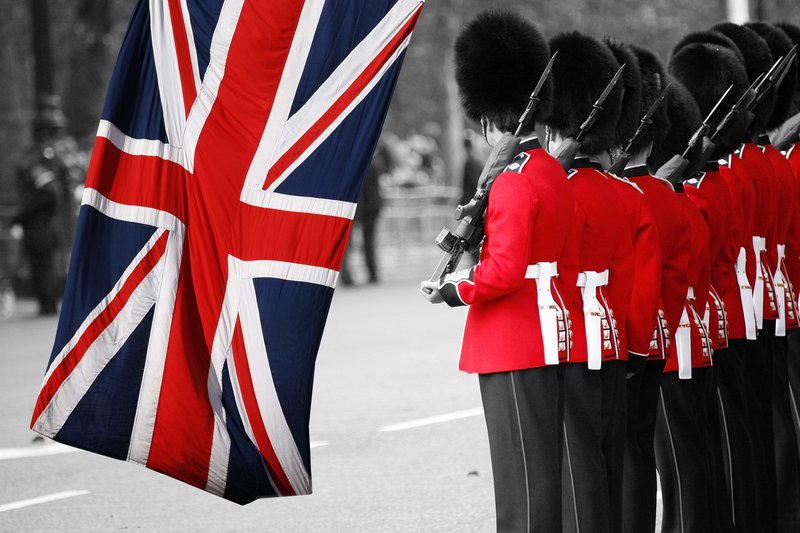Important Factors in Piano Moving You Should Consider
Posted on 06/06/2025
Important Factors in Piano Moving You Should Consider
Moving a piano is not your average relocation task. These grand musical instruments are heavy, intricate, and often carry immense sentimental value. Whether you are transferring a grand piano or an upright to a new home, rehearsal space, or performance venue, there are several important factors in piano moving to keep in mind for a safe and successful transition. This comprehensive guide explores all crucial aspects to help you understand what piano moving entails and how to prepare effectively.

Why Is Piano Moving So Challenging?
Pianos are not just large pieces of furniture--they are delicate, valuable, and require precision when being moved. Here's why moving a piano is a specialized job:
- Weight and Size: Pianos can weigh anywhere from 300 to over 1,200 pounds.
- Shape and Fragility: The irregular shape and fragile components like strings, pedals, and hammers can be easily damaged.
- Delicate Finish: The exterior wood finish can be scratched or chipped if not handled properly.
- Internal Mechanisms: Even slight misalignment or jolt can affect the piano's sound and tuning.
Understanding these challenges underscores the need for proper planning and professional assistance.
Essential Preparations Before Moving a Piano
One of the key factors in piano moving is adequate preparation. Take these steps to set the stage for a smooth move:
Measure Everything
- Measure the piano's dimensions - height, width, and length.
- Measure doorways, hallways, and staircases to ensure clear passage.
- Plan the path in advance to avoid tight squeezes and potential damage.
Protect the Instrument
- Use padded moving blankets to cover all surfaces.
- Secure lids and pedals to prevent them from shifting.
- Remove loose pieces and store safely.
Get the Right Equipment
- Moving Dollies: Heavy-duty dollies built for piano moving should be used to support the instrument's weight.
- Straps and Tie-Downs: Use quality straps to keep the piano secure during movement.
- Ramps: Ramps will help to navigate steps and loading areas without straining the piano or movers.
Choosing Professional Piano Movers vs. DIY
One of the most significant factors to consider in piano moving is whether to hire professionals or attempt a do-it-yourself move. Here's an in-depth comparison to inform your decision-making:
Benefits of Hiring Piano Moving Experts
- Experience: They understand the nuances of moving all types of pianos.
- Insurance: Professional movers have insurance that covers any accidental damage.
- Specialized Equipment: Movers use industry-standard tools for maximum safety.
- Efficiency: They know how to disassemble, move, and reassemble pianos efficiently.
Risks of DIY Piano Moving
- Risk of personal injury due to the heavy weight and bulkiness.
- Potential to damage the piano's internal or external parts.
- Possible property damage such as dented walls or scratched floors.
- Lack of insurance means you bear the full cost of any accidents.
In summary: For most people, investing in a reliable piano moving service is safer, more cost-effective, and provides peace of mind.
The Logistics of Safe Piano Relocation
Another important piano moving consideration is the logistics involved, which can vary depending on the location, piano type, and environment.
Assess the Route
- Visualize and walk the route from start to finish--inside and outside both properties.
- Check for stairs, tight corners, narrow doorways, and any obstacles.
- Clear any clutter from the route well in advance.
- If elevators are involved, make sure they are large enough and have adequate weight capacity.
Climate and Temperature Concerns
- Pianos are sensitive to extreme temperatures and humidity changes.
- Avoid exposing your piano to direct sunlight or rain during the move.
- Let the piano acclimate to the new environment to prevent tuning issues.
Preparing the Piano for Transport
Protecting your piano during the move is crucial for preventing costly repairs or restoration. Here are some essential preparation tips:
- Wrap and Pad: Use thick moving blankets, padding via foam or bubble wrap, and secure with durable tape.
- Remove Legs and Pedals (for Grand Pianos): Carefully detachable parts should be removed and wrapped individually.
- Lock or Secure the Lid: This prevents accidental openings and potential damage during the move.
- Label Fragile Components: Mark sensitive areas clearly for those involved in the move.
Securing the Piano in the Moving Vehicle
- Place the piano against a wall inside the truck for added stability.
- Use heavy-duty straps to prevent shifting during transport.
- Avoid stacking items on top of the piano.
- Check periodically during longer journeys to ensure everything is secure.
Post-Move Care for Your Piano
Once your piano arrives at its new location, additional steps must be taken for its ongoing care:
Acclimation
- Let your piano sit for a few days to adjust to the new temperature and humidity.
- Sudden environmental changes can affect both the wood and internal strings.
Professional Tuning and Inspection
- Arrange a piano technician to inspect and tune your piano after moving.
- Moving can slightly impact the internal alignment and tension, causing the instrument to go out of tune.
Ongoing Placement Considerations
- Place your piano away from direct sunlight, vents, and drafts.
- Ensure the floor is level and stable, especially for heavier grand pianos.
- Consider using caster cups to protect floors and improve stability.
Common Mistakes to Avoid When Moving a Piano
Being aware of the most common piano moving errors will help you avoid expensive mistakes:
- Underestimating the Weight: Always have enough manpower for lifting and guiding the piano.
- Skipping the Planning Phase: Mapping out the route is crucial for navigating tight spaces and avoiding obstacles.
- Improper Equipment: Using makeshift tools increases the likelihood of damage or injury.
- Rushing the Process: Take your time; hasty moves are often the cause of accidents.
- Ignoring Professional Help: The risks often outweigh the price of hiring professionals.
Piano Moving Insurance: Why It Matters
Including insurance among your crucial piano moving considerations ensures you are financially protected against unforeseen circumstances.
- Pianos are high-value items, and even with care, accidents can happen.
- Insurance can cover both the instrument itself and potential property damage during the move.
- Always confirm with your chosen movers what type of insurance is offered and what it covers.
- If moving by yourself, investigate adding coverage through your homeowner's or renter's policy.
Having adequate insurance offers peace of mind and protects your valuable investment.
Expert Tips for Efficient and Safe Piano Moving
To successfully navigate all the important factors in piano moving, use these expert tips:
- Communicate your piano's details and accessibility challenges to movers in advance.
- Schedule your move for daylight hours for optimal visibility.
- Ensure all helpers are briefed about their roles and safety protocols.
- Wear suitable footwear and gloves for better grip and injury prevention.
- Document the piano's condition (photos, videos) before the move for insurance and peace of mind.
- Keep your piano's moving documentation and insurance info handy at every step.
- Don't forget to represent the value and fragility of your piano to everyone involved.

Conclusion: Prioritize the Right Piano Moving Factors
Relocating a piano is a task that goes far beyond simply lifting and shifting heavy furniture. Each factor counts--whether it's choosing the right professionals, using appropriate tools, insuring your instrument, or post-move care. Keeping these key factors in piano moving top of mind will help minimize the risks and ensure your beloved piano continues to make beautiful music in its new home.
Does your piano need to be moved soon? Don't compromise on the details. Plan carefully, hire experienced piano movers, and protect your investment by considering all aspects highlighted in this guide.
Frequently Asked Questions About Piano Moving
How much does it cost to move a piano?
Costs vary based on the size and type of piano, distance, and the complexity of the move. Expect to pay more for stairs, tight hallways, and grand pianos due to their larger size and weight. Always request a detailed quote from your mover.
Can regular movers move a piano?
Many standard moving companies lack the tools, insurance, or expertise specifically required for piano moving. Hiring a specialist is always recommended for optimal safety and care.
Will my piano need tuning after the move?
Yes, it is common for pianos to need tuning after a move, even if handled with utmost care. Environmental changes can affect the strings and soundboard.
Is it possible to move a piano myself?
While technically possible, DIY piano moving is not advisable unless you have the right tools, a strong team, and understand the risks involved. Professional movers minimize the potential for costly errors or injuries.
How can I find reputable piano movers?
Look for movers with positive reviews, specialized piano moving certifications, and solid insurance coverage. Ask for references and inquire about their track record.
In summary, when it comes to piano moving considerations, being proactive, prepared, and relying on professionals are the best ways to protect your instrument and peace of mind during the transition.


